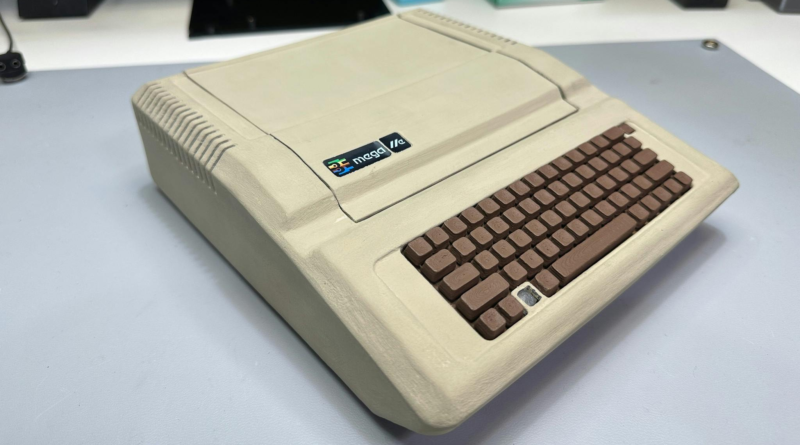Bald Engineer's Mega IIe is a Modern Miniature Apple II Based on Mega-II Chip from 1986 – Hackster.io
Please ensure that JavaScript is enabled in your browser to view this page.
When Apple introduced the Apple IIGS in 1986, it contained a chip called the Mega-II. This chip is described as "an Apple IIe on a chip." This intriguing statement made this engineer wonder: "Can you build a standalone Apple IIe-compatible computer around the Mega-II?" In the latest element14 Presents project video, I document my multi-year journey to answer this question.
The 16-bit Apple IIGS featured near-perfect backward compatibility with the 8-bit II, II+, and IIe software library. Many believe the reason for this compatibility was the Mega-II chip. However, after examining the design of the IIGS, it became clear to me it wasn't responsible for software backward compatibility at all! The Mega-II only does two things: manage IO devices and produce the Apple II video modes. The IIGS's chipset and firmware handle everything else.
The video explains three other devices that use the Mega-II or variants: the Tiger Learning Computer (TLC), Video Overlay Card, and Apple IIe Expansion Card. The expansion card used a much later design called Gemini. None of these devices appear to use the same Mega-II in the IIGS to function as an IIe. Although the TLC, which never left test marketing, comes very close.
The element14 Presents video covers a brief overview of the initial design called Rev 1. It was a small collection of PCBs that booted to the Applesoft prompt. But that was it! The rest of the video walks through the Rev 2 and Rev 3 designs.
Rev 2 is a Mega-II hardware development platform. It features a backplane design to allow for testing blocks of the Apple IIe circuit and functions of the Mega-II. The backplane's signal layout solved a significant issue from the first revision. It eliminated 30 fly-wire connections by laying out the address and data signals so they could connect directly to the Digilent Digital Discovery! This one simple trick made debugging with the logic analyzer nearly painless!
Overall, Rev 2 provided significant learnings about the Mega-II. While I encountered several issues, none were critical roadblocks. For example, the video briefly explains the role of another IIGS ASIC called Slotmaker. This chip provided an Apple II-compatible slot AND the ability to talk to disk drives through another IC. The Integrated Woz Machine (IWM) is a single-chip version of the Apple II Disk Card, designed by Steve Wozniak.
The Mega-II uses two Raspberry Pi RP2040 microcontrollers, one for input and one for output. On the input side, an RP2040-based circuit provides an interface for modern USB keyboards. The microcontroller's Programmable IO (PIO) modules for the GPIOs respond fast enough to the keyboard control signals from the Mega-II. (Traditional microcontroller interrupts were too slow.) On the output side, an RP2040 captures the digital video bus from Mega-II and converts it to VGA output.
Rev 3 became the focus after testing and developing all the hardware blocks. This version of the project is a single-board version of Rev 2. The 4-layer printed circuit board measures approximately 165 by 175 millimeters. It consolidates a modern WDC 65c02, EEPROM, 128K of DRAM, the Mega-II, an IWM with 20-pin and 19-pin connectors, Slot Maker with Apple-II compatible slot, and both Gameport connector types.
Mega IIe's additional interfaces include a VGA port, USB Host for the keyboard, a 3.5 earphone jack, and power input. The overall package is just slightly larger than the 5.25-inch disk drive used with the original Apple IIe!
Unfortunately, the initial Rev 3 experience was less fun than Rev 2. The problems started with the (first) PCB house manufacturing the boards incorrectly and then cascaded from there. The EEPROMs were incredibly unreliable, a board design problem prevented them from working, and when I finally got the board to boot, I loaded the EEPROM with the wrong binary. However, persistence paid off, and eventually, Rev 3 answered my question about the Mega-II!
You can watch the full video above. Skip to 24:26 for a brief overview and demonstration. The design files and additional information about the project are available on this element14 Community post.
Hackster.io, an Avnet Community © 2024


